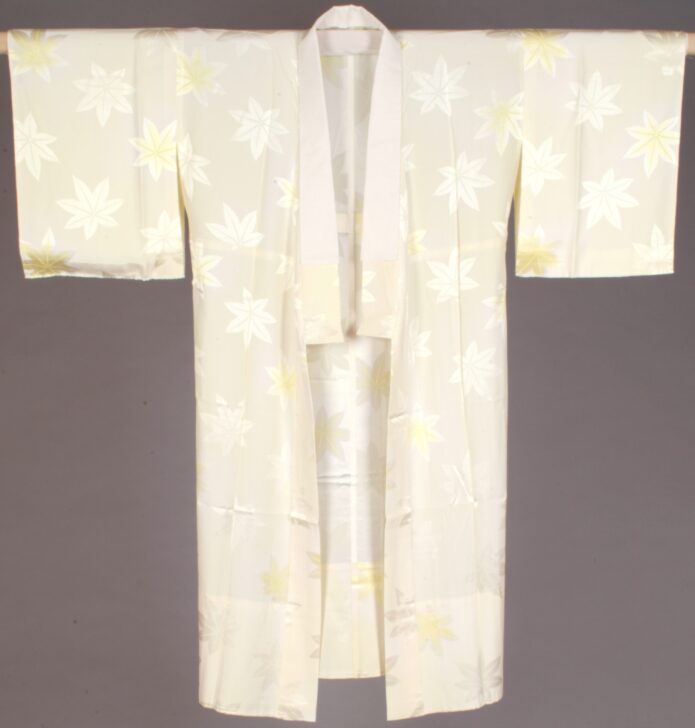Pale yellow silk underkimono with designs of maple leaves
Japanese

Description
Layering has long been an important principle of stylish dress in Japanese traditional fashion. Court ladies in the Heian period (794–1185) wore multiple layers of colored robes (possible because the sleeves were much wider than on later kimono) and sumptuous woven-patterned jackets. At the collar, sleeves, and hem, the layers created waterfalls of elegant fabrics and colors. The ensemble, called jûni hitoe (meaning twelve layers), typically would have weighed about 40 pounds.
The jûni hitoe tradition is echoed in the modern style of wearing underkimono (or nagajuban) so that part of the collar, sleeves, and hem peek out from under the top layer of kimono. While most collars are white in twentieth-century fashion, the fabric of women’s underkimono is often a patterned red design. The color red was especially favored for underkimono in the Edo period (1615–1868),
as tradition held that it had protective power.
Some underkimono, such as the white one with maple leaves displayed in this section, were intended for wear during a particular season. In this case, autumn would have been subtly suggested through the glimpse of under-kimono through the kimono’s sleeves and at the hem.
(Wrapped in Silk & Gold Exhibition, Summer 2010)
Subject Matter:
Traditional silk kimono undergarment.
Physical Description:
Silk crepe with woven satin maple leaf designs ("crepe-backed satin") enhanced by hand-painted yellow accents. Sleeves are lined and main part of body is not.
Usage Rights:
If you are interested in using an image for a publication, please visit https://umma.umich.edu/request-image/ for more information and to fill out the online Image Rights and Reproductions Request Form.